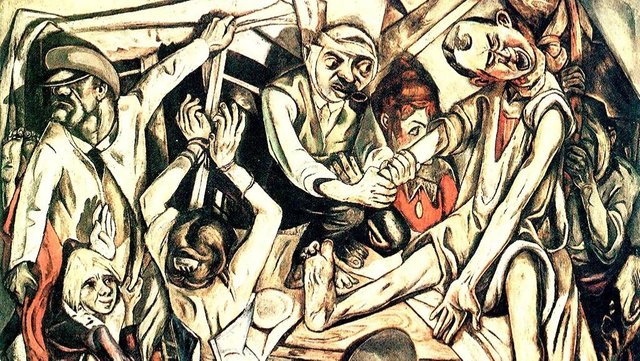Max beckmann.
Max Beckmann, The Most Expensive Painting Artist in the world.
This is the most expensive painting in hate NAZI, but is deeply loved by viewers.

Christie's auction hall has just made the biggest sales since the last 10 years. A bidder from Asia finally closed the purchase for Max Beckmann painting with a value of $ 45.8 million. The sale of Beckmann's paintings along with other painting sales was able to help the auction house with a total sales value of $ 190 million.
This figure could eventually make Christie's, according to Artnet, can beat Sotheby's sales value for the first time in 10 years. During the month of June, Christie's auction house has declined in sales since June. At the end of last year, this auction hall was only able to sell $ 33.4 million.
The painting that was able to save the sale of Christie's auction house was Beckmann Birds' Hell (1937-1938), depicting the horror and terror perpetrated by the Nazi regime when they came to power. This painting was previously shown at the Metropolitan Museum of Art in the exhibition entitled "Max Beckman in New York" which ended last February.
This painting attracted the attention of three bidders, but ended up in the hands of Larry Gagosian who want to redeem it with a figure of $ 45.8 million. The highest record of the previousBreckmann painting was Self-Portrait with Horn (1938), sold for $ 22.6 million. The buyer is Richard Feigen on behalf of Ronald Lauder's Neue Galerie in New York.
What makes Beckmann special? These painters, artists, and visual artists were born on February 12, 1884 in Leipzig, Saxony, Empire of Prussia, and died on 27 December 1950 in New York, USA. He is regarded as an expressionist painter, despite rejecting the movement and labeling it.
After the first European wartime, Beckmann entered the era of NAZI. At that time, the government hated the work of Beckmann so down his works on display at several museums in Germany. Beckmann's work is considered decadent, poisoning the minds of young people, and not representing German pride.
Many of Beckmann's paintings depict the corrupt corrupt government of Germany at the time. He presents amputees, disgusting prostitutes, to immoral businessmen. In 1933, the Nazi government forbade him to teach at an art school in Frankfurt.
In 1937, he and his family flew to Amsterdam to escape. For 10 years Beckmann took refuge in the Netherlands before finally getting a teaching job at Washington University in St. Louis. Louis and The Brooklyn Museum in New York.
"Life is horrible, so is art," Max Beckmann wrote in his diary before sailing to the United States in 1917. "But what's better? O far country - save me. The Uncertain. "
Beckmann came to America at the invitation of Perry T. Rathbone, director of St. Louis Art Museum. Rathbone himself was a big figure in the art community of the United States at that time because he served as director of the Museum of Fine Arts, Boston, for 17 years earlier.
Rathbone was intrigued by Beckmann's tortured, exiled, and terrorized by the Nazi government. In the United States, Beckmann was then asked to teach art at Washington University. Over at St. Louis Beckmann is very active in making works and he is happy because his environment supports the creative process in painting.
Art historian Peter Sels writes that Beckmann loved the landscape of the old town of America in Mississippi, because the city of the province is cosmopolitan and reminds Beckmann of his former residence in Frankfurt. However, in the United States its name when it was indirect big. Although in Germany the Weimar period he is very well known, Beckmann felt foreign in the United States.
Local newspapers in st Louis call it a garbage artist. While the president of the artists union in St. Louis called him a man of ordinary artistic understanding. This happens when Beckmann becomes a curator of artwork to be exhibited at St. Louis Art Museum in 1947. This protest nevertheless did not make Beckmann retreat, even he continued to paint despite criticism coming. Currently, there are 382 well-preserved and publicly accessible paintings in St. Petersburg. Louis
Some of his works can still be enjoyed today in several museums in America, such as The Museum of Modern Art in New York, the Art Institute of Chicago, the Museum of Fine Arts in Boston, and the Guggenheim Museum in New York. Some of his best paintings have been scattered in collectors of personal paintings such as Christ and the Woman Taken in Adultery (1917), The Night or Die Nacht (1919), Carnival (1943), Falling Man (1950), The Town or City Night (1950) and Self-Portrait in Blue Jacket (1950).
Today, Beckmann's work is increasingly relevant. Artnet's Blake Gopnik writes the meaning of Beckmann's painting in the Donald Trump era of politics.